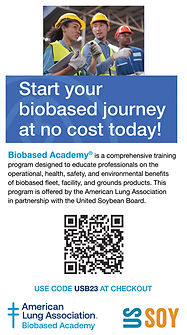Cathay celebrates record growth in its corporate program to advance SAF use

Cathay announced Nov. 4 that it continues to make significant progress in its sustainability journey, reaching new milestones since the launch of its corporate sustainable aviation fuel (SAF) program in 2022.
This year, the program has achieved substantial growth and is becoming one of the biggest initiatives of its kind globally, marked by new global partnerships and a record commitment to SAF usage, according to Cathay.
Building on the momentum of the past two years, the corporate SAF program has introduced a tiered structure, allowing customers to participate based on their SAF demand and business needs.
“Cathay is excited to welcome DB Schenker, the biggest contributor to the program to date, and Kuehne+Nagel as Diamond partners, EQT as a Gold partner, and Julius Baer and Lenton Group as Silver partners, bringing the total to 15 partners this year,” the airline stated. “Notably, this year has seen multiyear commitments from partners as they view SAF as a long-term solution to their decarbonization journey, reinforcing Cathay’s 2030 SAF target.”
Cathay also recognized the continued commitment of some of its longstanding partners, including Airport Authority Hong Kong, AIA, Dimerco Express Group, Kintetsu World Express, Standard Chartered Bank, Swire Pacific, Yusen Logistics, and the Business Environment Council.
“This diverse partnership base reflects a strong commitment to reducing the climate impact from both business travel and airfreight services, and across different sectors in our community,” Cathay stated.
The program partners together in 2024 have committed to using 2,650 metric tons of SAF (approximately 900,000 gallons), equivalent to a reduction of approximately 8,060 tons of carbon emissions—three times the reduction achieved last year.
“Our corporate SAF program has now entered into its third year and keeps expanding,” said Cathay Group CEO Ronald Lam. “The program is a key pillar in Cathay’s overall approach to leading the aviation industry’s decarbonization. With growing support from our corporate travel and cargo customers, Cathay continues to increase SAF usage across our network worldwide. In doing so, our customers are able to help reduce emissions from their air travel and airfreight.”
SAF remains the most crucial lever for decarbonizing airline operations.
Compared to conventional jet fuel, SAF can reduce over 80 percent of carbon emissions on a lifecycle basis, depending on the SAF technology and feedstock used.
Cathay Pacific was among the first airlines in the world to announce a target of 10 percent SAF for its total fuel use by 2030.
Since then, the airline has successfully conducted SAF uplifts at both Hong Kong International Airport and other airports overseas.
In addition to scaling up SAF adoption, Cathay also relies on fleet modernization, operational-efficiency improvements, leveraging on emerging-technology breakthroughs to decarbonize aviation, and high-quality carbon offsets and removals to achieve the long-term net-zero carbon-emissions goal by 2050.






















-RKstandin.jpg)
_gif.gif)




